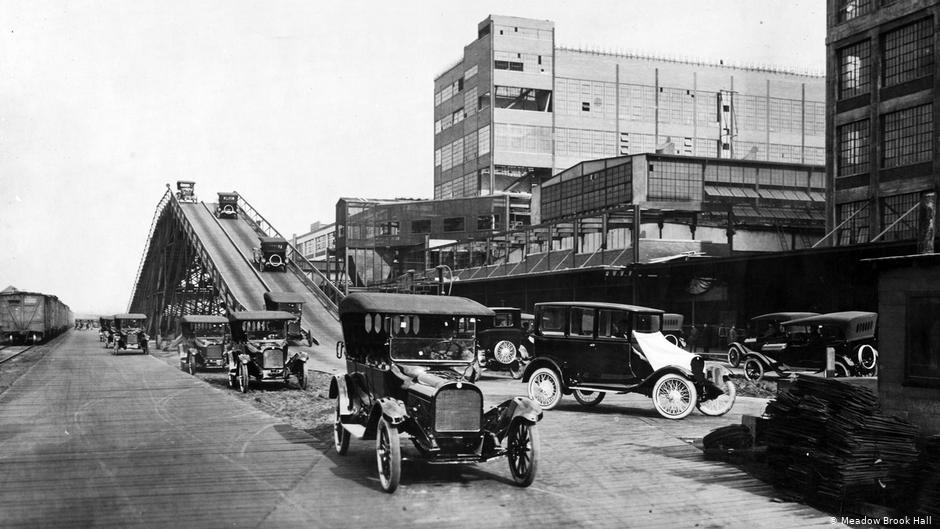Meadow Brook Hall’s Curator Madelyn Rzadkowolski and Kim Zelinski,
Senior Director of Operations & Estate Development worked with the staff of the German publication DW.com to develop an extensive feature on the Dodge Brothers, by providing archival imagery, historical context and key information.
Read an excerpt below or click here to read the full article.
Dodge Brothers: From family ownership to corporate underling
When the Dodge brothers died in 1920, they left behind a manufacturing behemoth that had sales of $161 million. The company was later sold and went through many changes, but the name Dodge is still part of Fiat-Chrysler.
Most of the thousands of US automotive startups in the past 120 years failed to even get off the ground. Others rolled along for a while and then sputtered out. Very few brands are still around from the early days. One of the few is Dodge Brothers, which has been making headlines for 106 years.
At a time when horse-drawn carriages still were a common sight — even in Detroit — brothers John and Horace Dodge were keen to make horseless carriages motor along. They started a machine shop in 1900 and were soon supplying Ford with nearly all its moving parts. Never satisfied, they wanted to do something new, something bigger.
The brothers founded their own automobile manufacturer on July 1, 1914. Without any outside investors they started with one vehicle, a five-passenger touring car without a solid roof. Six years later a palate of 145,000 vehicles left their Hamtramck, Michigan plant.
Facing all challenges
The company was flexible enough to make either right- or left-hand-drive vehicles, which they sold around the world. They survived a downturn during World War I by selling vehicles to the US military and making specialized parts for artillery guns.
Stories made the rounds of John crash-testing cars into walls himself or throwing tires off of buildings to see how they bounced. Other stories told tales about drunken carousing and bar fights.
Whatever the gossip, the Dodges turned their knowledge of machine making into an enormous business that grew each year. It was a Cinderella story that ended tragically in 1920 when both brothers died.
They were simple and honest machinists from rural Michigan. “They were exacting; they were fair; they demanded a lot, and they gave a lot in return,” concluded Frederick J. Haynes who had known the brothers for 20 years and took over as president of the company after John died.
“We can only speculate on what the Dodge brothers might have accomplished had they lived another 10 or 15 years. One intriguing piece of evidence suggests that they were preparing to follow Henry Ford’s lead in producing the raw materials needed for their automobiles,” wrote Kim Zelinski, a Dodge expert at Oakland University’s Meadow Brook Hall, in a tribute to the brothers.


